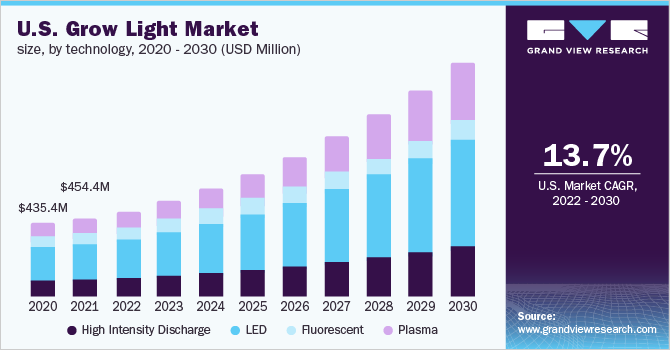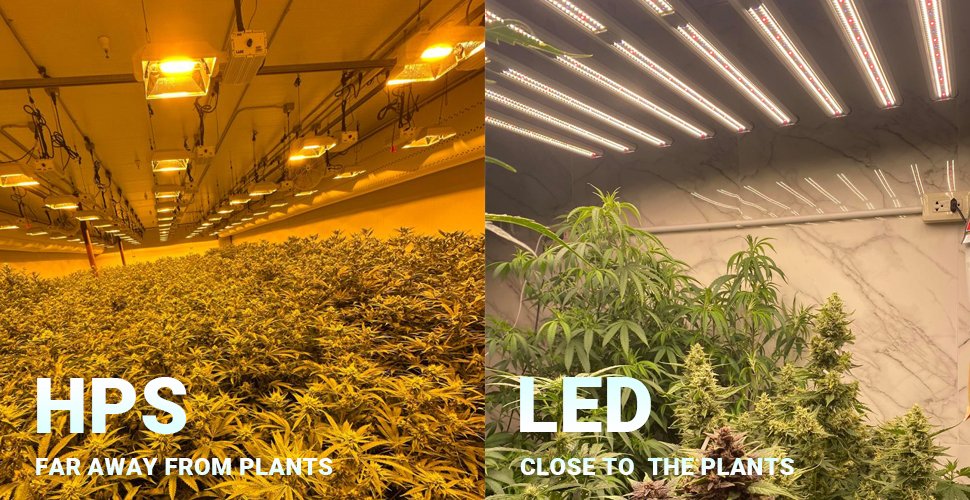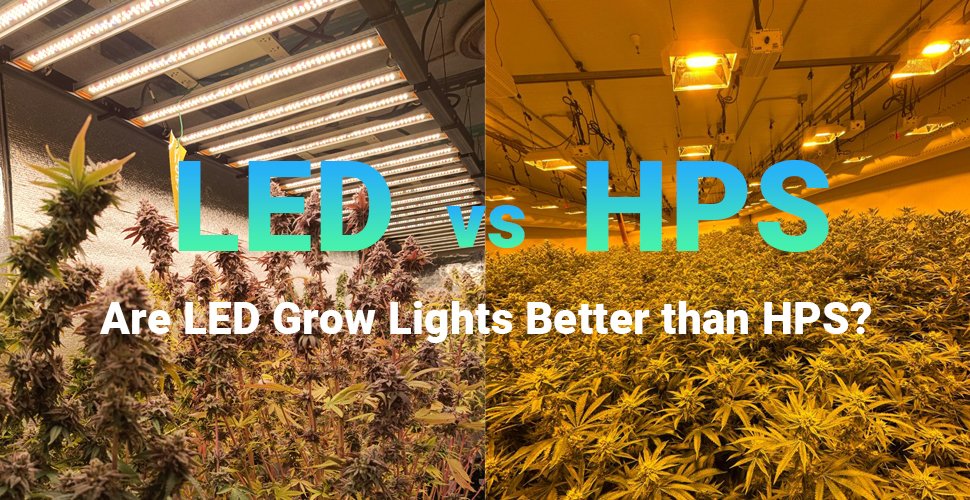Obsah
Dnes jsem viděl profesionálního pěstitele na LinkedIn, který řekl, že nechci “upgrade” k vašim LED. Toto tvrzení mi dalo pocit, že ať už používání rostoucího konopí s LED rostoucími světly nebo vysokotlakými světly pěstování sodíku. V myslích ostatních je světlo světlo.
LED, ztracená v myšlenkách, je neoficiálním a nezastavitelným trendem nahradit tradiční žárovky pro domácnost, místo lampy na halogenu automobilu. V minulosti nebyla LED Grow Lights dostatečně silná, drahá a neměla nejlepší spektrum pro růst rostlin, což činí HPS světla jedinou možností pro zahradnictví.
Ale to, co bylo v minulosti správné, nemusí být dnes tak. LED Technologies Advance změnila rostoucí hru a přinesla změnu v obchodních modelech a dříve nebo později LED Grow Lights pro konopí zcela nahradí vysokotlaké sodíkové lampy.
Co je lepší pro pěstování LED nebo HPS, je dlouhodobá debata v zahradnickém průmyslu. Na obou stranách je mnoho příznivců. Zde stručně vysvětlím LED vs HPS vedle sebe. Pokud jde o to, která možnost je pro vás pravá, vše záleží na vašem koníčku, vaší finanční schopnosti a vašem pohledu na rostoucí hry.
Jsem si jistý, že vy, kteří čtete tento článek, stejně jako každý konkurenční komerční pěstitel, jste hledali příležitosti pro inovace a optimalizaci. Přijďte se a pokračujte ve čtení.
Trendy LED osvětlení 2023
Očekává se, že globální trh s vnitřním růstem rostlin bude v roce 2021 v hodnotě 4,23 miliardy USD, se složenou roční mírou růstu (CAGR) 15,0% od roku 2022 do roku 2030.
Podle obrázku je LED nejlepším umělcem v tomto trendu.

Rostoucí globální populace, rostoucí popularita městského zemědělství, vertikální zemědělství a ekologická produkce ovoce a zeleniny zvyšují růst trhu. Kromě toho vertikální zemědělské postupy výroby potravin ve svisle naskládaných vrstvách, jako jsou použité skladby, mrakodrapy nebo kontejnery, řídí růst trhu.
Podle zprávy USA Fox News 1. dubna místního časuvláda USA se připravuje na zavedení celonárodního zákazu běžně používaných žárovek.
Uvádí se, že ministerstvo energetiky (DOE) dokončilo předpisy, které zakazují prodej žárovek v dubnu 2022, a vstoupí v platnost 1. srpna 2023.
Americká DOE nyní naléhala na maloobchodníky, aby začali prodávat přechodné typy žárovky a v posledních měsících začaly vydávat varovné oznámení společnostem. Regulace ušetří spotřebitelům ročně asi 3 miliardy dolarů na náklady na elektřinu a v příštích 30 letech sníží emise uhlíku o 222 milionů tun.
Podle předpisů budou žárovky a podobné halogenové žárovky zakázány a nahrazeny diodami emitujícími světla (LED).
TVývoj věcí je spirála a vlna vpřed, vedená z nejvíce nepopulárního, vyvinula se do současného trendu a významný trend. Přestože silnice navíjejí, budoucnost je jasná.
Upřímně přitahujeme všechny, aby přispěli k našemu úsilí v boji proti globálnímu nedostatku energie a změně klimatu.
Jsou růstová světla LED tak horká, jak HPS roste světla?
Světla HPS s vysokým zařízením
HPS produkuje hodně tepla a je vhodný pro chladnější oblasti nebo studené podnebí. Zlepšuje kvetení, jako u rajčat a paprik, což může těžit z mírného zvýšení teploty pro zahájení kvetení a plodu. Teplo z HPS zvyšuje fotosyntézu a zvyšuje kvetení konopí.
Abychom byli naprosto upřímní, světla HPS generují tolik tepla, že pěstitelé musí investovat více peněz do technologie chlazení. Přebytečné teplo z těchto světel může být také bezpečnostním rizikem, zejména pokud musíte tyto žárovky nebo předřadníky vyměnit.
Příliš mnoho tepla však může vést k pomalému a zakrnělému růstu rostlin a podobně může hodně tepla vést k dehydrataci rostliny. Pěstitelé mohou být nepříjemní s prostředími pro pěstování horké pěstování a nastavením optimálních teplot ve omezených prostorech může být náročné.
LED LED Grow Lights
LED světla produkují velmi málo tepla a snižují se riziko poškození rostlin. Udržuje pohodlnější vnitřní prostředí a snižuje potřebu dalšího chladicího nebo ventilačního zařízení pro pěstitele a rostliny. Ještě důležitější, LED růstová světla jsou pro lidi bezpečná.
Na druhé straně LED diody vydávají velmi malé teplo, což může ztěžovat dosažení jednotného pokrytí na velkých plochách.
Rozdíly ve spektru
Vysokotlaké rozsvícení sodíku emitují vlnové délky ve žluté barvě i červené spektrum. Je ideální pro většinu rostlin, které jsou plodné a kvetení, protože červené světlo je nezbytné pro intenzivní kvetení a vysoké výnosy.

A světlo LED konopí může být navrženo tak, aby emitovalo celé spektrum, včetně UV, modré, zelené, červené a daleko červené. Každý typ světla je důležitý ve všech fázích růstu rostlin. Modré světlo pomáhá podporovat klíčení sazenic a vývoj kořenů. Červené světlo reguluje růst rostlin a pomáhá rostlinám květiny a produkuje ovoce. Ultrafialové světlo pomáhá rostlinám produkovat zlepšenou chuť a kvalitu konopí.
Můžete se také podívat na tento blogový příspěvek a učit se jsou celospektrální růstová světla lepší.
Mnoho Profesionální LED Grow Light Companies Nyní máte možnost přizpůsobit spektrum světla tak, aby vyhovovalo konkrétním potřebám rostlin. Pokud potřebujete přehled do vlastního spektra, můžete Informace kontaktujte AuxGrow.
Scénáře aplikací
Oba jsou vhodné pro vnitřní růst rostlin, ale liší se ve svých scénářích použitelnosti kvůli jejich různým charakteristikám.
Vzhledem k vysokému tepelnému výkonu HPS se nejčastěji používají v komerčních skleníkových prostředích nebo velkých operacích pěstování. Můžete navštívit komerční pěstitelské zařízení ve vašem okolí a zjistíte, že pěstování světel HPS bude dále od rostlin konopí.
LED růstová světla jsou však všestrannější a jsou dobře vhodná pro malé vnitřní zahradnictví, velké komerční skleníkové prostředí nebo domácí použití. Možná si všimnete, že uvnitř pěstovacího stanu nebo v malé místnosti, Autoflower LED LED Světelná vzdálenost je krátký kvůli vynikajícímu nízkému tepelnému výkonu LED.

Porovnání nákladů LED vs HPS
HPS Grow světla
HPS Grow Lights mají nízkou počáteční investici. Intenzivní osvětlení HPS však vyžaduje dostatečné proudění vzduchu a ventilace. Prostředí HPS Grow je velmi závislé na potřebě dalšího chlazení nebo ventilačního zařízení.
HPS má velmi krátkou délku života a je třeba ji vyměnit po asi 8-12 měsících. Náklady na práci na výměně lamp jsou opakující se náklady, zejména pro velké výsadby tisíci lamp.
V dlouhodobém horizontu budou HPS pěstová světla výrazně zvýšit náklady na údržbu.
LED růstová světla
Naproti tomu LED rostlinné světla vyžaduje vyšší počáteční investici. Není však vyžadován žádný další ventilační systém. A ušetříte náklady na chlazení. LED růstová světla mají obvykle životnost 50 000 až 10 000 hodin.
Ve skutečnosti jsou někteří pěstitelé mezi nimi roztrháni jednoduše proto, že chtějí vědět, co je nákladově efektivnější. LED diody jsou mnohem efektivnější než HPS světla, což jim umožňuje používat méně wattů k dosažení stejného nebo vyššího výkonu.
Jako příklad, náš Auxgrow GT05 (800 W LED Grow Light) produkuje vyšší světelný výstup než standard 1000 Watt HPS Grow Light, při konzumaci o 25% méně energie. Někteří lidé si mohou myslet, že nevyrábí tolik energie jako 1000 W HPS Grow Light. Mohlo by to být tak, že podle jejich vnímání je 800 W méně silné než 1000 W HP kvůli jeho nižšímu příkonu?
Může však dosáhnout hodnoty PPFD 1444 μmol/㎡. Vydává stejnou fotonovou energii jako 1000 W HPS Grow Light, což znamená, že produkuje stejný růstový efekt jako 1000 W HPS.
V dlouhodobém horizontu se tento 800 W LED osvětlení růst platí sám za sebe, zatímco systém 1000W bude stát další náklady na elektřinu. Je to proto, že systém 800 W vyžaduje 880 kWh pro plné růst, zatímco 1000W systém vyžaduje 1200 kWh na růst.
Jedním z důležitějších bodů je, že auxgrow GT05 poskytuje správné pohodlí. Jednoduše Nainstalujte LED světlo Přímo na své původní poloze a tuto jednoduchou práci můžete ovládat sami, tj. Ušetřit náklady na výměnu světla.
V dlouhodobém horizontu je LED více úspor peněz.
Přinášejí růstová světla LED více než lampy HPS?
Kromě nákladů na elektřinu LED vs HPS jsou pěstitelé rozhodně více zaměřeni na srovnání výnosů LED vs HPS.
Podívali jsme se na co Swell Farmacy musí nabídnout v roce 2019 prostřednictvím inovací a optimalizace příslušenství. Tým Swell Farms to testoval tím, že vyměnil 20 hps světel za 20 LED. Podívejte se na podrobnosti zde.
Dívka skautka cookie
Girl Scout Cookies je rostlina, která je velmi citlivá na vysokou intenzitu HPS světel. S LED rostoucími světly a smíšeným spektrem, o něco výše v baldachýnu, dostanou tak úžasnou malou formaci chyb.
Pod HPS Grow Lights:
Celkem THC %: 25,17
Celkový kanabinoidy %: 28,67
Celkový terpenes %: 1,31
Pod HPS Grow Lights:
Celkem THC %: 25,17
Celkový kanabinoidy %: 28,67
Celkový terpenes %: 1,31
Bílá vdova a Bruce Banner
Představení bílé vdovy v místnosti LED Grow. Týmy v obdivu sledovaly výsledky vyživování této kratší rostliny s osvětlením řazení spektra. Poukázal na pevně zabalené uzly, více než na ty v místnosti HPS.
Pod HPS Grow Lights:
Celkem THC %: 15,91
Celkový kanabinoidy %: 18,17
Celkový terpenes %: 2,09
Pod LED rostoucími světly:
Celkem THC %: 21,79
Celkový kanabinoidy %: 24,72
Celkový terpenes %: 2,64
Pokud jde o celkový chemický profil:
- Za LED bylo celkové procento THC o více než 24% vyšší.
- Za LED bylo celkové procento CBD o 23% vyšší.
- Za LED bylo celkové procento terpenu o více než 22% vyšší.
Co LED odpovídá 1000 W HPS?
Když chcete vyměnit všechna svá příslušenství HPS, ale nevíte jak vybrat LED osvětlení rostlin, obraťte se na naše náhradní HPS GT05, 1: 1.
Auxgrow GT05, kterou jsem právě citoval výše, je speciálně navržen jako přímá náhrada za svítidla HPS. Přesahuje výkon 1000 W rostlin rostoucího světla.
Je to působivý výkon 1960 µmol/s, účinnost PAR dosáhne až 2,45Umolu/j pro více světla milující plodiny až do 25% úspor energie vs. Stejný účinek a výkon jako Gavita CT 1930E LED. Je to cenově dostupná alternativa k Gavitě.

Kompaktní design tohoto 1000w HPS LED LED se zapadá přímo do standardního nastavení HPS, usnadňuje to než EvaR Chcete -li upgradovat a převést své osvětlení na technologii LED!
Mimochodem, americký DLC (Consertium Designlights Consortium) vydal oficiální verzi 3.0 technických požadavků na osvětlení rostlin. Požadavky zvyšují prahovou hodnotu účinnosti osvětlení rostlin (PPE) na minimálně 2,30 μmol/j, což je o 21% nárůst oproti prahu OOP ve verzi 2.1.
Tato prahová hodnota PPE pro osvětlení LED rostlin je o 35% vyšší než prahová hodnota PPE pro 1000 W dvojité HPS lampy. Z hlediska hodnoty PPE, Auxgrow GT05, LED náhrada za 1000 W HPS je v souladu s požadavky na certifikaci DLC 3.0.
Co je lepší pro pěstování LED nebo HPS?
Po přečtení tohoto článku o rozdílech byste měli vědět, že obě možnosti mají své výhody a nevýhody. Měli byste mít směr na LED nebo HPS pro autoflower na výběr.
Pro uživatele HPS je výměna všech lamp za LED diody více než jen upgrade na lampy, jde spíše o návyky pěstitele.
Ale proč si musíte zvyknout na to, na co jste zvyklí? Pokud pěstujete jakoukoli plodinu, která přináší značnou hodnotu, utrácení trochu více za světla přinese po několika výsadbách návratnost multiplikátoru vaší investice.
HPS pěstování světla jsou dobrá, ale LED jsou lepší. LED růstová světla jsou ve všech směrech lepší než HP. Pokud máte opravdu vážně vážně o svém proudu zisku a skutečnou návratnost investic, doufám, že postupně přijmete, že LED inteligentní světelný systém je absolutní měnič her.
S dlouhodobými úsporami je investice do kvalitního LED růstového světla cestou.
Stejně jako LED s HPS se nemůžeme dočkat, až uvidíme, do čeho se toto odvětví vyvíjí s mladšími generacemi nadšenců konopí.
Jayes
Jako digitální marketingový manažer ve společnosti AUXGROW spojuje Jayes vášeň pro hydroponické systémy a odborné znalosti v oblasti LED pěstebních světel. Díky praktickým zkušenostem a hlubokému porozumění vás Jayes provede světem udržitelného pěstování.







